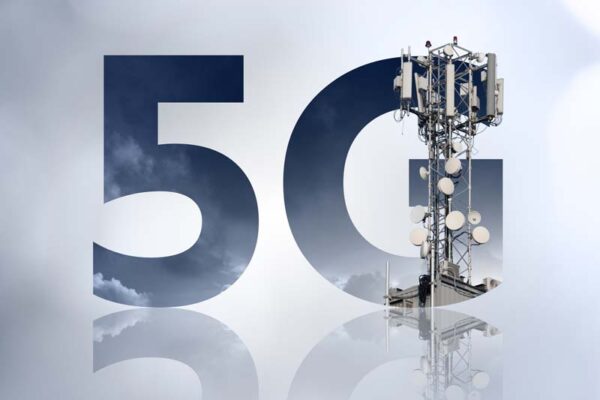5G NR: Understanding the New Radio Standard
By Florian Denzin
June 18, 2024

The 3rd Generation Partnership Project developed the 5G New Radio (NR) global standard. The organization created this standard according to the International Mobile Telecommunications-2020 (IMT-2020) requirements set by the International Telecommunications Union (ITU).
5G technology offers various services to meet communication needs, including:

Compared to LTE, 5G can address a much broader spectrum range. In addition, it is more flexible and efficient with its spectrum usage. 5G supports various network deployments better, enabling private or campus networks.
Since its appearance in Release (Rel) 15, 5G NR has evolved throughout subsequent 3GPP releases. After meeting IMT-2020 requirements in Rel 16, more improvements and market input have been included in the 5G standardization process from Rel 17 onward.
NR Reduced Capability (NR RedCap) exemplifies 5G’s continuous evolution. This technology offers efficient mid-speed communication or 5G non-terrestrial networks (NTNs), bringing 5G communication via satellites.
Despite the success of 5G, operators haven’t abandoned LTE. Instead, 5G embraces LTE for a smoother transition and greater architectural flexibility.

5G NR utilizes various methods and technologies in different areas to achieve new levels of reliability and efficiency. Moreover, 5G increases performance and enables more spectrum resources in higher frequency ranges, like millimeter wave (mmWave). A new degree of physical layer and system flexibility enables better scaling and optimized performance in throughput and latency.
Advanced antenna systems like massive multiple-input multiple-output (MIMO) improve 5G network performance, enabling better throughput and increasing capacity and coverage. Through beamforming, the network has more flexibility to address end users and devices.
Radio power can be focused on specific receivers. This allows several data streams to be directed to one device to improve throughput. Another option is to better serve several devices simultaneously with a dedicated beam.
Enhanced mobile broadband (eMBB) was the initial 5G service launched with Rel 15 to enable fast rollouts by utilizing existing LTE networks. In 2024, the third generation of 5G IoT devices supporting Rel 17 is being launched with optimized carrier aggregation combinations, enabling even higher throughput.
The most notable additional service launched with Rel 17 is 5G NR RedCap. The standardization was finalized in the second half of 2022, with products launching in 2024. RedCap offers a 5G device class for mid-speed use cases.
Read our press releases to learn more about our 5G RedCap and 5G eMBB product launches:

RedCap is ideal for use cases that don’t need ultrahigh-speed or ultralow latency but require sufficient throughput to support data streams. Examples of next-generation applications that benefit from RedCap include:
As 5G standards progressed, 5G NR enabled greater system architecture flexibility. The availability of NTNs is one of the results of this improved architectural elasticity.
Even though NTN was not part of the IMT-2020 requirements, a first feasibility study has already been carried out in Rel 16. Normative standardization for NTN NR and NTN IoT started in Rel 17. Further enhancements, especially focusing on mobility scenarios and throughput enhancement, will come with Rel 18.
Rel 19 will address the regenerative payload (i.e., base station functionality embarked in the satellite) according to the phased approach for NTN standardization. Telit Cinterion engages in NTN standardization and is part of the 6G-NTN initiative.
Telit Cinterion is the global leader in IoT and high-speed cellular mobile broadband enablement. We are the only module vendor that participated in the RedCap standardization. These first-generation RedCap solutions empower our customers with a smooth evolution path from mid-speed LTE to cost-effective 5G.
Speak with a Telit Cinterion expert to discover the best 5G IoT module for your deployment.
Editor’s Note: This blog was originally published on 23 May 2019 and has since been updated.